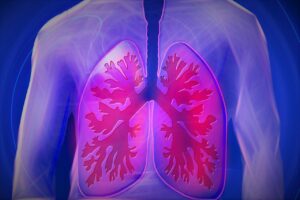Just a 1 µgm3 increase in particulate matter (PM2.5) correlates with a 7% increase in COVID-19 mortality, according to a new study published in the journal Environment Research Letters.
While data is still emerging, a growing body of early evidence has suggested that long-term exposure to air pollution might cause an increased likelihood of severe outcomes from COVID-19.
In order to test this, researchers from the State University of New York have investigated how the 2014 National Air Toxic Assessment for hazardous air pollutants is related to COVID-19 mortality.
As of July 11, in the U.S there were 129,832 confirmed cases and deaths attributed to COVID-19.
When controlling for known socioeconomic and behavioural health influences, the researchers found that just a 1 µgm3 increase in PM2.5 and 1ppb increase in ozone concentrations correlates with a 7% and 2% increase in COVID-19 mortality respectively.
These findings suggest that increased exposure to air pollution, even at levels below legal guidelines, is associated with higher COVID-19 mortality rates.
Based on this, the authors of the study have said that PM2.5 exposure may provide one possible explanation as to why some more polluted counties, such as Georgia and Louisiana, have experienced higher mortality rates than urban areas.
The researchers have highlighted that going forward, enforcing air pollution limits will be essential in order to provide public health benefits to the whole of society.
In related news, earlier research from the Office of National Statistics (ONS) has revealed that long-term exposure to particulate matter (PM2.5) may increase the risk of contracting and dying from COVID-19 by up to 7%.
Photo Credit – Pixabay

















Here you go: https://www.london.gov.uk/sites/default/files/pm2.5_in_london_october19.pdf
Pippa
You want to learn?
You need to know an innovative solution that is being placed on the market, which eliminates the emission of industrial pollution into the atmosphere, when burning fossil material.
Check the website:
https://sstcleanair.com
Many thanks Pippa. Hard to get official info. Though I see the WHO limit is 10mg average per day. I think my neighbour has a wood burning stove and this may be increasing it in my house. I’ll see how the winter goes.
Thanks Pippa but could you advise where you got that figure from?
Companies, Governments and the Press, need to know an innovative solution that is being placed on the market, which eliminates the emission of industrial pollution into the atmosphere, when burning fossil material.
Check the website:
https://sstcleanair.com
Hi Peter, the legal limit for particulate matter is 25 µg m-3
Pippa
‘Even at levels below guidelines…’
Could you advise where to find these guidelines for the UK? The 2.5 particle readings in my house can range from 5 to 20 though I’m unsure how accurate the monitor is.